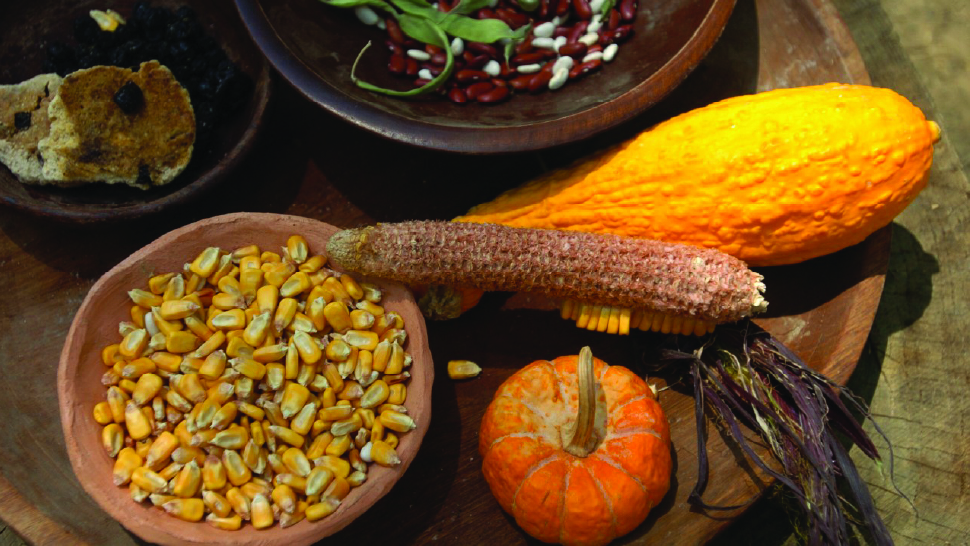Learning from the Three Sisters
- by bonappetit

In the Americas, indigenous peoples domesticated a host of animals and plants, weaving foodways and cultures over the many thousands of years that anteceded European colonization.
An early site of agriculture by indigenous peoples was Mesoamerica, where there is evidence for the domestication of maize, beans and squash some 7,000 years ago, as the glaciers receded from around the Gulf of Mexico.¹ These three agricultural crops would come to be grown across the Americas, in climates as distinct as the lands of the Haudenosaunee (Iroquois) people in the northeast, to the southwest where the Pueblo people practiced dry farming techniques.² The Haudenosaunee people were the first to call these crops “the three sisters,” but it is unknown which culture began growing them together, in symbiosis.
The technique that brought the three sisters into harmony involved companion planting, with each plant protecting and nourishing the other plants around it.³ Corn was planted first so that the beans could have a trellis to climb as they reached for sunlight.⁴ As with other leguminous crops, beans take nitrogen from the atmosphere and fix it below ground via root nodules, enriching and fertilizing the soil. The squash spread around the base of the corn and beans, acting as a living mulch and helping the soil to retain moisture and nutrient availability.
The resiliency of this technique was shown time and again in places that received little rainfall, like in the desert southwest of what is today the United States. In our own era of compounding climate crises, learning from indigenous techniques like the three sisters is more important than ever.
As we reflect on Native American Heritage Month this year, it is important to center long-ignored indigenous voices – people whose ancestors promoted and practiced resilient agricultural techniques like the three sisters for eons. As we face the changing dynamics of agriculture and food production due to climate change, with increased droughts and natural disasters, the three sisters offer us an important lesson – that working with nature, instead of against it – can help to increase resiliency.